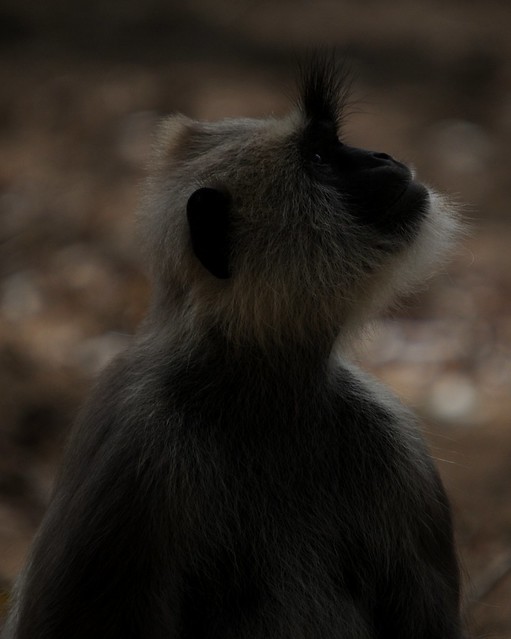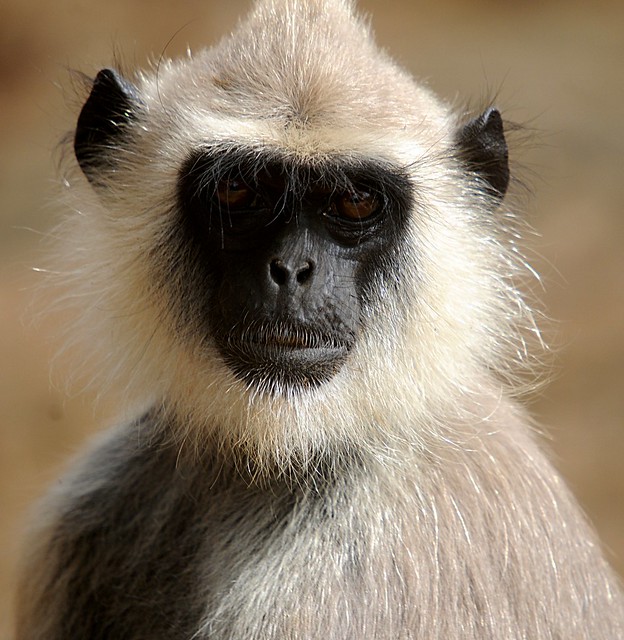"There is more meaning and mutual understanding in exchanging a glance with [them] than with any other animal I know. Their sight, their hearing, their sense of smell are so similar to ours that they see the world in much the same way as we do. We live in the same sort of social groups with largely permanent family relationships. They walk around on the ground as we do, though they are immensely more powerful than we are. So if there were ever a possibility of escaping the human condition and living imaginatively in another creature's world, it must be with [them]"
David Attenborough, in giving the quote above, was famously talking about Gorillas in the genre-defining series Life on Earth and yet the quote seemed the perfect accompaniment to the picture above and I thought of it as soon as I took the picture. But whilst it may seem to be totally appropriate, the difference in brain power between a Gorilla and this Tufted Grey Langur monkey is remarkably wide.
 Tufted Grey Langurs (Semnopithecus priam - one of three split species of Langur named after characters from the Illiad) are old world leaf-eating monkeys. Like gorillas they are grazers with a bit of added brain power and a male led social structure. That however is where the similarities stop.
Tufted Grey Langurs (Semnopithecus priam - one of three split species of Langur named after characters from the Illiad) are old world leaf-eating monkeys. Like gorillas they are grazers with a bit of added brain power and a male led social structure. That however is where the similarities stop.This one on the right is checking out the roof of my chalet at Yala Village Hotel and thinking - that looks like a good place to party at 4am!


2 comments:
I don't know why (or do I?) that I respect the apes and monkeys give me the creeps.
Your moray shot is spectacular in that previous post.
Would you mind if I used it in class as an example of disruptive coloration?
FC - go for it. You can grab a big version here: http://www.flickr.com/photos/deep-blue/5239511868/sizes/o/
I've also got a video of the same animal free swimming which really shows the effect of the coloration if you want it? (Everyone else - that will appear at some point here).
I thought I was the only one creeped-out by monkeys (great apes less so but big monkeys absolutely).
Post a Comment